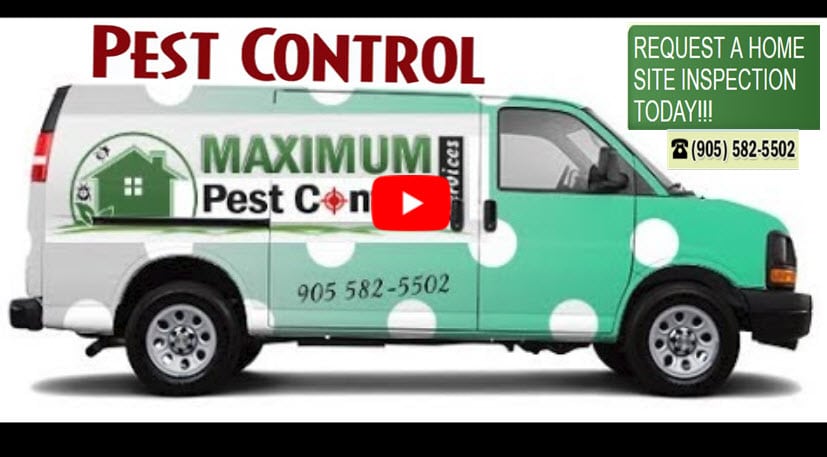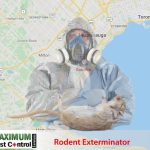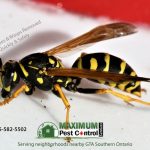
Step-By-Step Guide On Effective Pest Control Treatment: How to Get Rid of Pests the Right Way
Finding a trail of creepy crawlies trying to take up residence in your home or business is enough to make anyone feel not good and worried. Not only are these creatures disgusting and repulsive to homeowners, but most can be quite destructive.
Take, for instance, an army of ants. These intruders are pretty tiny, easy to go unnoticed and easy to ignore. Although they are mostly considered more of a nuisance than anything, some ant species can cause a host of problems. An infestation of carpenter ants can weaken your wooden structures by excavating galleries to build their nests in time.
Fortunately, you don’t have to suffer in silence when pests invade your home. Here is a step-by-step guide on how to get rid of pests the right way. You will also learn how to effectively treat an infestation like the pros brought to you by Maximum pest control services.
Understanding Integrated Pest Management (IPM) Principles and Tactics
There are millions of pest species on the face of the earth, many of which have come to depend on humans to provide their sustenance. These pests have unique characteristics and adaptation mechanisms. Hence, not all pest problems are tackled the same way.
Maximum Pest management professionals in Oakville Ontario have special training and experience handling complex pest problems for your home or business. They have outlined the best methods and techniques for controlling all kinds of pest and rodent issues – Integrated pest management.
IPM is an Eco-friendly approach to pest control. It aims at the long-term prevention of pest problems through the integration of different techniques, such as biological control and habitat manipulation. This method utilizes the most accurate information on the life cycle of pests and their adaptation mechanisms in the environment.
With IPM, pesticides services are viewed as the last resort. They are only applied after monitoring indicates that they are necessary to strictly eliminate the target pest. Pest control methods are selected and implemented in a way that minimizes risks to people, non-target animals, property, and the environment.
Here are the IPM procedures and practices utilized by professionals for effective and cost-efficient pest control:
- Monitoring and Inspection to Identify Pests
A crucial part of IPM is monitoring and inspection to identify the pest causing you trouble. Not all insects require control. Some organisms, such as spiders, are beneficial predators and play an important role in keeping pest populations in check. Correct pest identification will help you decide whether a control is needed.
Gather as much information about the pest as possible, including its biology, risks, and environmental factors. This means inspecting every corner of your property and landscape to identify the pests, level of infestation, and damage caused. The information gathered should help you decide whether the invaders can be tolerated or if they warrant control and the most effective control method to use.
- Getting Rid of Conducive Conditions
IPM aims to keep pest threats from becoming a problem. One of the best ways to do this is by manipulating pest habitats and eliminating conditions that enable them to thrive. During the inspection, you should be able to identify the factors that draw pests into your home or yard, such as food, water, and shelter.
Eliminating these factors means modifying the environment and making it unfavorable for pests. This includes removing clutter and debris around your home, removing weeds and unneeded vegetation, repairing leaking pipes, and trimming trees that touch your home.
- Exclusion or Prevention Techniques
An important aspect of IPM is preventing pests from becoming a threat. Exclusion means keeping pests away from your property. This involves preventing the annoying invaders from accessing your indoor space through control methods like caulking cracks, crevices, holes, and gaps.
Other exclusion methods include: Strategically placing live traps and glue traps in possible entry points, creating a pest protection barrier around the perimeter of your home using repellents, and installing pest monitoring devices like bait stations and termite monitors.
- Controlling The Pests
If the inspection process indicates that pest control is required, IPM then evaluates the best control method that offers long-term and effective results. A risk-free pest control approach like trapping, using predatory insects, and hand-removing critters is chosen first.
Perhaps further monitoring indicates that the biological control methods are not working? In that case, a chemical control method should be applied. Chemical treatments are the last resort in IPM but are often the most effective way to get rid of a pest issue.
This involves selecting a pest-specific pesticide and spraying a targeted area to kill pests while ensuring the safety of non-target organisms. Alternatively, you can use pesticides in bait stations and strictly follow the instructions in the labeling for effective results.
Safety Precautions During Pest Control Treatment at Home
Pesticides are chemicals made to be toxic enough to kill or control a specific group of organisms. These chemicals can be dangerous to humans, pets, and your loved ones if not used properly. That’s why you must be familiar with all the safety precautions if you decide to treat pests on your own at home:
Before pest treatment
- Pets and children are extremely sensitive to chemicals. Ensure that they are not around the place during treatment.
- Ensure things like utensils, cups, and cutlery are removed from countertops and cabinets, as these areas should be treated as well.
- Bedding must be secured safely. The aquarium should also be covered, and its air pumps turned off to ensure they don’t bring chemicals inside.
- Bathrooms need to be treated thoroughly. Hence, you must secure items like toothbrushes and soaps.
- Understand the pesticide to be used. Ensure it is effective for the specific pest being treated and that it’s not dangerous for your property and health.
During Pest Treatment
- Wear personal protective equipment (PPE) such as aprons, face masks, goggles, gloves, head cover, and gumboots.
- Don’t spray chemicals near people, as they can cause adverse reactions. Spray containers must have child-resistant tops!
- Strictly follow all instructions on the label!
After Pest Treatment
- Wait until the recommended time (at least four to five hours) to re-enter the house after treatment. This allows the treatment to take effect and particles to settle down.
- Immediately discard any foods that might have been left unwrapped.
- Do not clean or wipe off the treated areas until after the recommended time is over.
- Thoroughly rinse the spray bottle and its cap and store it in a safe place out of children’s and pets’ reach.
- Leftover pesticides should also be stored properly, while empty pesticide containers should be disposed of according to local regulations.
Engaging Licensed Pest Control Experts
Hiring a pest control technician is the best way to get rid of a pest problem successfully without spending too much time, money, or energy. The professionals are highly trained, experienced, and equipped with the right tools to exterminate pests.
Ensure that you only engage a company such as Maximum pest control services that’s licensed to control pests and rodents. You can be sure that such a company will provide both extermination and prevention services. On top of that, they will schedule regular inspections and monitoring services to detect early signs of pest threats and take appropriate action immediately before pests can become a problem. Contact Maximum today bonded and certified company with trained expert technicians to help solve your pest problems quickly and safely (905) 582 -5502.




